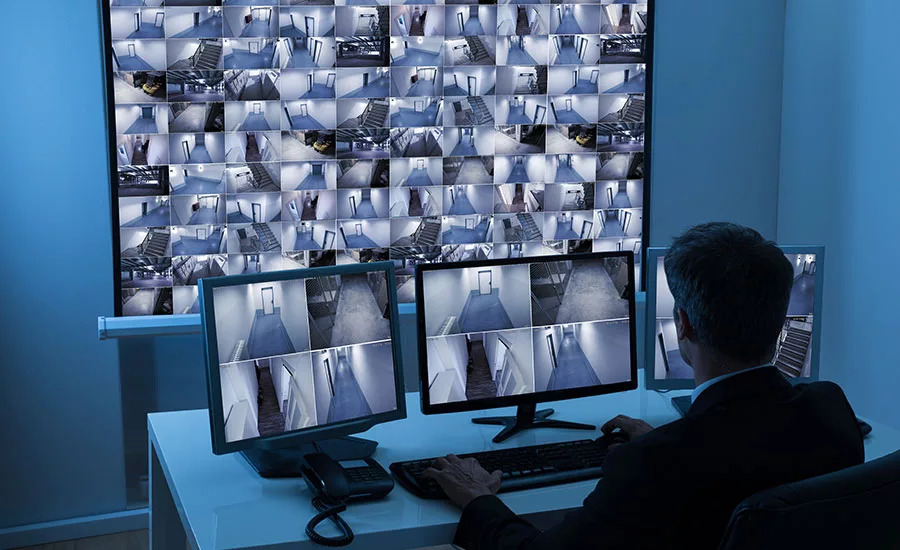What is H.265 and Why Do I Need It?

As the security industry embraces 4K, Ultra HD and other high-resolution imaging formats with high bitrates, recording and storing surveillance video has become one of the main challenges facing end users and systems integrators. Since typical video surveillance installation requires 24/7 recording and live viewing, the cost of moving potentially large amounts of data across a facility’s infrastructure, decoding high-resolution video and storing this data can significantly increase the cost of the entire surveillance system. The latest developments in video compression techniques can help solve this problem.
H.264 vs. H.265 explained
H.265 (also known as High Efficiency Video Coding, or HEVC) is the latest in a long line of video compression standards. Like its predecessor, H.264, H.265 was initially developed for the broadcast industry by the ITU-T Video Coding Experts Group and the ISO/IEC Moving Pictures Experts Group.
However, as good as H.264 is for SD and HD resolutions, its ability to evolve to handle the demands of the latest high-resolution imaging formats, such as 4K, is limited since 4K stored in H.264 creates a proportionally larger file. H.265 expands on the efficiencies of the H.264 compression standard by generating the highest-quality images in the smallest video file possible.
H.265 essentially offers the same level of picture quality as H.264, but with more efficient codec, so there's less data to manage. H.265 uses only half the bit rate of H.264. It significantly reduces bandwidth and storage requirements which effectively lowers infrastructure costs and ultimately makes high-resolution surveillance systems more affordable. Decoding H.265 streams requires more computational power when viewing. However, most VMS systems easily leverage GPU accelerated decoding power available from off-the-shelf video cards to achieve the required performance at little to no extra cost. When recording H.265, the NVR simply sees a smaller file to be stored since no decoding is necessary until playback is required.
Does It Make Sense for Everyone?
As with all new technologies, the optimal time to make the transition depends on the user’s situation and requirements. Here are some sensible recommendations to help installers and end users who are thinking about new systems, or considering upgrades, decide on the best path to H.265:
- Completely New Systems: If a new business, building or campus under construction needs a completely new system, push to specify a fully H.265 system. There is no reason to install a waning technology now when the advantages of the new system are so clear, and the time to install the appropriate infrastructure is during construction. Specifying the H.265 end point equipment (cameras and recorders) may cost more than H.264 equipment today, but the infrastructure savings should more than offset that difference over time.
- Upgrading an Existing System: Next to a completely new installation, a full upgrade of an existing system is the largest possible project – and if the wiring needs to be replaced, the project can easily cost more than an entirely new system. It is critical to plan carefully, and work with an installer/integrator experienced with upgrade projects. If the entire system must be pulled and replaced, then follow the recommendation above, knowing that the new system will be an investment with a long-planned life. If the existing wired infrastructure is in good condition, it is highly likely that you can upgrade the endpoints to H.265-capable devices and gain all the benefits of the latest protocols with only a fraction of the cost of a new system.
- Upgrading a Part of a System, or Adding a New Section onto an Existing System: To help end users gradually transition to H.265, it is best to choose cameras that employ a triple codec that enables simultaneous streaming of H.265, H.264 and MJPEG formats. Once a budget is available, the NVRs can be upgraded and the cameras can be set to operate using H.265. In a similar vein, a new extension of the system can be installed with H.265 capability (in a newly constructed wing, for example) but set to operate using the older protocol for a time to integrate into the existing system. A popular hybrid workflow for multi-stream capable cameras is to stream lower-res H.264 thumbnails in a live x-by-y grid view and record high-resolution H.265 stream. When an operator clicks on an image to enlarge, many VMS systems can automatically switch to a high-resolution H.265 stream for maximum clarity. This saves valuable compute resources when decoding multiple live images simultaneously.
There is value in having better quality images and fast frame rates, but the related increases in bandwidth and storage requirements often make it difficult for organizations with limited budgets to take advantage of higher quality video deployments. H.265 represents another leap forward in video compression technology and offers the potential to reduce these costs and make 4K and other higher-resolution video formats more accessible for security applications.
With H.265, the professional security market will continue to develop and deploy more advanced high-resolution, high-performance cameras, and users will be able to send more video data over their existing infrastructure, or achieve the same information content with less infrastructure. The professional security market benefits from this important technical achievement.
Looking for a reprint of this article?
From high-res PDFs to custom plaques, order your copy today!





